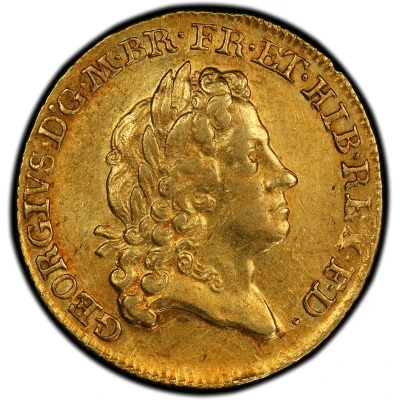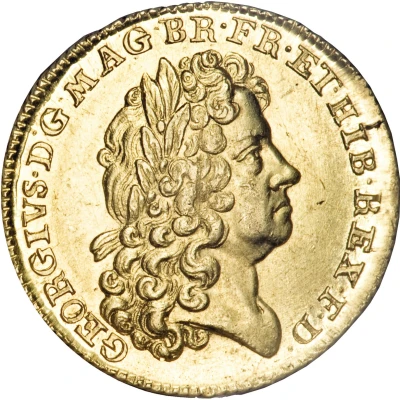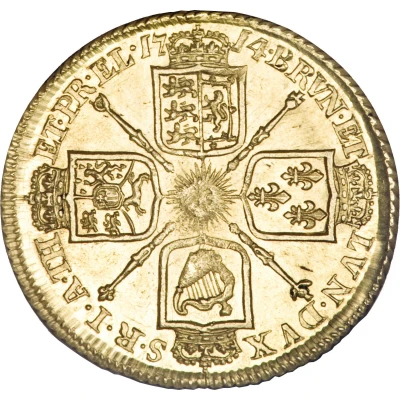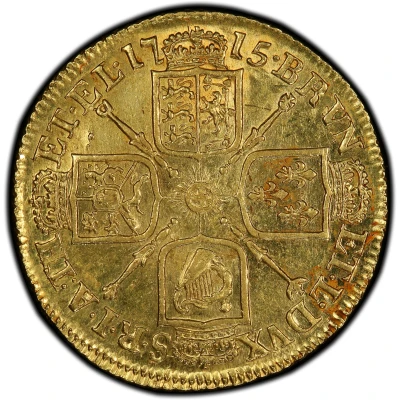


© PCGS
1 Guinea - George I 2nd portrait
1715 year| Gold (.9167) | 8.4 g | 25 mm |
| Issuer | United Kingdom (United Kingdom, British Overseas Territories and Crown Dependencies) |
|---|---|
| King | George I (1714-1727) |
| Type | Standard circulation coin |
| Year | 1715 |
| Value | 1 Guinea (21⁄20) |
| Currency | Pound sterling (1158-1970) |
| Composition | Gold (.9167) |
| Weight | 8.4 g |
| Diameter | 25 mm |
| Shape | Round |
| Technique | Milled |
| Orientation | Coin alignment ↑↓ |
| Demonetized | Yes |
| Updated | 2024-10-09 |
| Numista | N#13077 |
|---|---|
| Rarity index | 95% |
Reverse
Crowned cruciform shields around central Garter star with sceptres bearing national emblems in angles, divided date above, legend around.
Script: Latin
Lettering:
BRVN ET·L·DVX S·R·I·A·TH ET·EL
·17 15·
Translation: Duke of Brunswick and Lueneburg, Arch Treasurer and Prince Elector of the Holy Roman Empire
Engraver: Johann Ochs
Edge
Reeded
Comment
The guinea was valued at 21 shillings 6 pence between 1698 and 1717, when it was devalued to 21 shillings. These coins were struck at 44½ to the pound troy, giving a standard weight of 24/89 troy ounce (129.4 grains).Interesting fact
One interesting fact about the 1715 George I 1 Guinea coin is that it was part of a series of coins issued during the "Great Recoinage" of 1714-1717, which aimed to replace the worn and clipped hammered coins that were still in circulation with new, machine-made coins. This series of coins was the first to feature the guinea, which became a popular denomination in the British currency system and was used until the 19th century.



